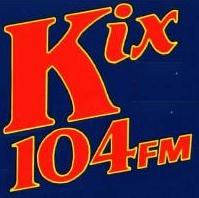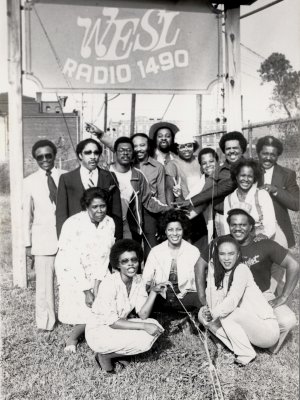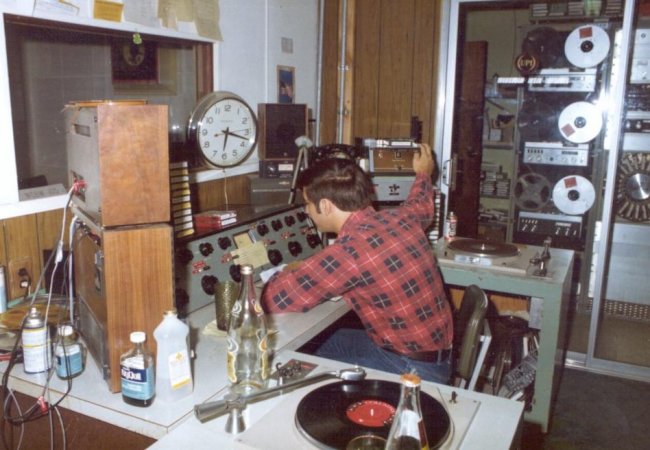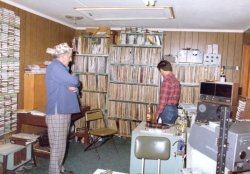Radio Articles
1260 Radio…The Voice of Metro East
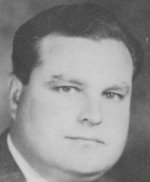
“We ate a lot of peanut butter.”
That was how Marshall True described his economical diet in the early, lean days of starting a radio station in Belleville, Illinois. True, his World War II army buddy Marvin Mollring, and investors John Lewis, Paul Wnorowsky and John Schultz launched WIBV, 1060 AM, on July 13, 1947, at Fischer’s “Dutch Girl” Restaurant, 2100 West Main Street, Belleville. An hour of music that Sunday morning was followed by a remote broadcast of religious services from Signal Hill Lutheran Church at 8100 West Main, Belleville. No doubt the newcomers to the St. Louis radio market prayed along with the broadcast that the peanut butter would hold out.
True sold advertising, Mollring did the radio engineering work, Wnorowsky was General Manager and Paul Rusky served as Station Manager. True’s challenge would be to get WIBV a piece of the Belleville advertising dollar in a town where small businessmen had the habit of spending their money with two daily newspapers. Wnorowsky and Rusky would have to develop programming that would offer something unique for Belleville area listeners.
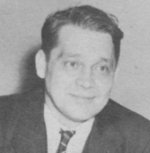
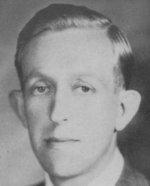
Mollring would keep the transmitter humming and maintain the broadcast equipment. The original broadcast day ran from 6 a.m. to 8:30 p.m. The restaurant/radio combination seemed to work well for both parties: Dutch Girl patrons could watch the announcers as part of their dining experience and the station had an accessible presence in the community.
The Belleville News-Democrat radio listings for October 4, 1948 presented the daily programming for seven AM radio stations: KSD at 550, KXOK at 630, WIBV at 1060, KMOX at 1120, KWK at 1380, WIL at 1430 and WTMV at 1490. Variety seemed to be the strategy at WIBV since the schedule had 15 minute segments of news, sports, farm features, Man on the Street, Good Neighbor, Pumpernickle, Roy Shaffer Show, Tumbleweed Tunes, Polka Time, Myrt and Marg, Victory Quartet, It’s Dancetime, 1060 Supper Club and Golden Bantam.
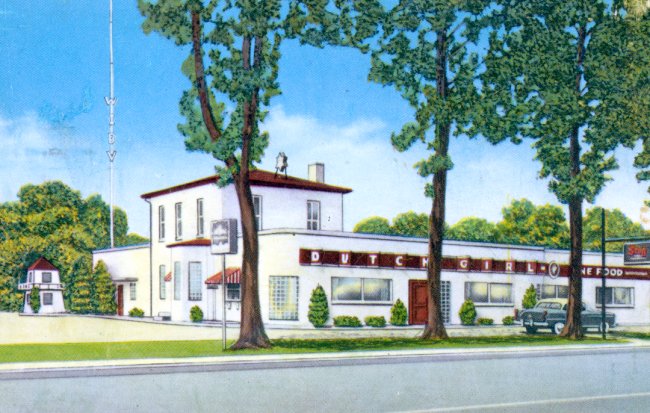
Country music was popular in the post World War II years and in 1950 country singer Johnny Rion joined the WIBV staff for two years as a live performer and record spinner. WIBV programming in the early 50’s featured Cactus Joe, Buy in Belleville, Dr. Crane, Country Preacher, plenty of local news and sports and Bill Bailey, who had compiled an impressive resume. Bailey advanced into the Program Manager and Station Manager positions and represented the radio station in the business and civic communities during that period. He later hosted the Downtown Club show from Schlosser’s Restaurant on East Main Street.
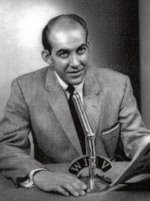
By the mid 1950’s peanut butter was still on the menu at the True household. The Federal Communications Commission allowed WIBV to move to 1260 AM at 1,000 watts of power. The increased power meant the broadcast tower would have to be lengthened. To save the expense of contracting the work, Marshall True fashioned a chair on a hoist and extended the tower himself, according to Terry True, Marshall’s son.
In the mid 1950’s Lee Pennock was cuing up the records and Reverend Ed Oxendine was a regular feature. Other programs included Hillbilly Hoedown, Wagner’s Wagon, Just Call Joe, Joe and Paul, and a new announcer who would prove to be very popular with Belleville’s sizable German audience. He spoke with a stereotypical German accent, told jokes, played records and touted himself as Otto Schultz, “the man with the sauerkraut head.”
Eddie George, also known as Otto Schultz, held a daily fifteen minute late afternoon slot and a half hour Saturday afternoon time period for the next twenty five years, introducing polka tunes and getting chuckles from his audience while relating the imaginary lives of “Fritz, Lena and the whole schmier.”
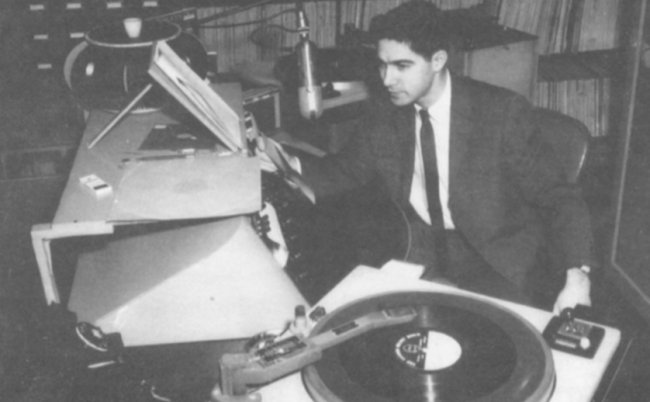
Bob Hardy, who later became synonymous with KMOX, St. Louis, started at WIBV in 1955 and performed the usual chores of running the control board, playing records and reading news stories and commercials. Norm Greenberg began a 22 year career with WIBV in 1958. Greenberg debuted as a newsman-announcer, moved to advertising sales and eventually Program Manager, Assistant Manager and General Manager.
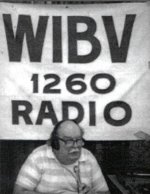
Lloyd “Moe” Harvey and Ron “Uncle Buck” Lipe joined the Belleville radio team in the 50’s. Moe spent about 30 years at WIBV. Part of his on-air shift included the “Stop the Housework” program and the annual “Let’s Talk Turkey” phone contests. Lipe became a “rocker” in the 60’s on KSHE-FM, St. Louis, assuming the moniker “Prince Knight.” Lee Coffee, WIBV Program Director in the late 50’s and early 60’s , left WIBV and enjoyed a long career at several St. Louis radio stations.
Bob Armstrong worked vacation relief in 1957 and recalls running the control board on Sunday mornings “for the live religious programs in the big studio. There was a gospel group from East St. Louis that had the place totally rocking!” Armstrong also remembers running the board for Otto Schultz with his trademark intro to polka songs, “You watch me Fritz, and I count ‘em off…ein…zwei…drei…schpiel’” Armstrong was promoted to the Program Director’s position and worked with News Director Al Schmidt, a retired Belleville newspaper reporter. In 1960, WIBV moved its broadcast operations from Fischer’s Restaurant to a new building at 3199 South Illinois Street, a mile and a half south of Belleville on Route 159.
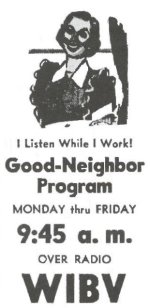
Roger Gafke was hired full time in the news department in 1965. He wrote editorials for GM Glen “Skip” Deffendall, who had succeeded John Lewis. WIBV began identifying itself as “The Voice of Metro East.” Gafke remembered fellow announcers Tom Ryther, Charles Napier, and Jeff Hendricks, who WIBV sent to Viet Nam to interview area soldiers. Hendricks finished out his radio career with Chicago radio giant WLS. Roger Downey worked at WIBV in 1969 and 1970. Terry Ganey worked in the 1260 newsroom from 1968-1972, when Frank Walters held down the morning shift.
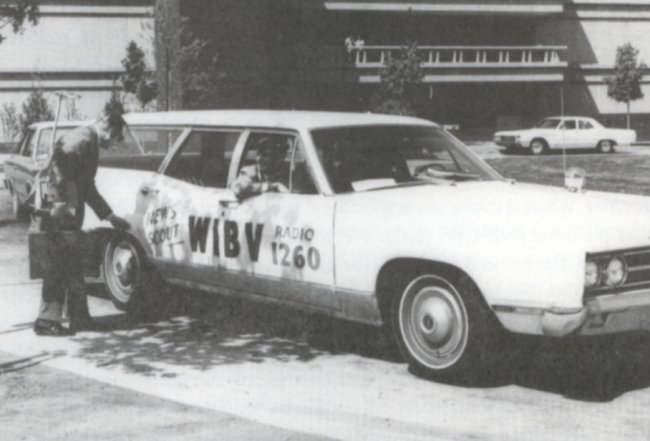
Late 1960’s photo of Pete Maer at the wheel,
Terry Gainey riding shotgun and SIU Edwardsville
Professor Harry Thiel standing outside the WIBV News Scout.
Note the broadcast antennae mounted on the
left rear bumper for covering live events.
Joe May estimates he has called between 3,000 and 4,000 high school, college and minor league games since he began at WIBV in 1970. Other staffers on the air included Pete Basch, Ron Jacober, Harry Swift, Joel Myers, Bob Agne, Frank Joachimsthaler, Tom Calhoun, Wil Jackson, Les Weatherford, Bill Cook, J.C. Hall, Ray Brammer, Mark Langston, Mary Ann Faulbaum, Mac Chamblin [and long time news director Jack LeChien].
Marshall True and Marvin Mollring retired and sold their interests in WIBV in the late 1980’s. The station was sold several more times before the year 2000 and each of those owners attempted to create a “regional” radio station that would attract more listeners and more advertising income. The WIBV call letters were quietly, unceremoniously retired when Disney Radio adopted WSDZ in late 2002.
(Excerpted and reprinted with permission of the St. Clair County Historical Society. Originally published in the Journal of St. Clair County, 2003.)
